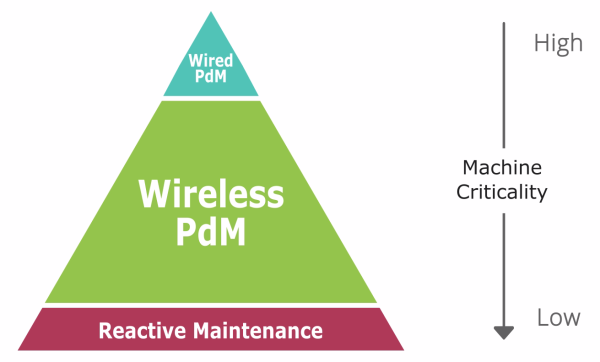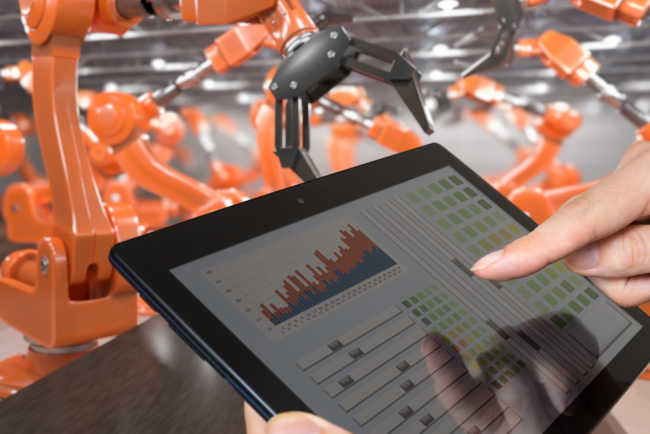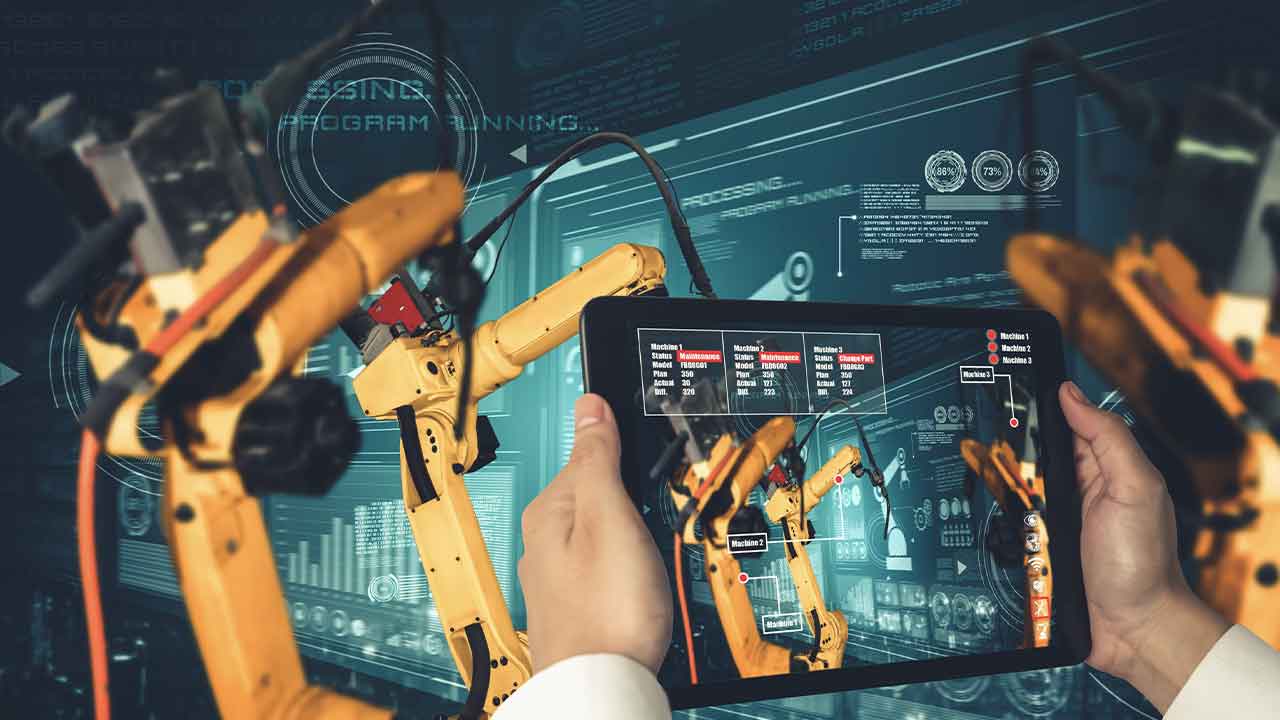The Power of Wireless Predictive Maintenance
Technology trends – wireless, cloud & machine learning – are transforming predictive maintenance models while reducing costs and complexity
Our lives are impacted by industrial machines every single day. In fact, everything from the food we eat to the fuel that powers our cars comes from factories. These factories have millions of machines that turn, churn, mix, grind, and transport things. In order to ensure maximize uptime, these industrial machines need to be maintained. Reliability engineers have employed different approaches ranging from reactive to preventive to predictive models over the years.
As an Industrial IoT startup, we’ve created an educational video that maps the benefits and limitations of the most commonly used IIoT maintenance models: reactive, preventive and predictive. The aim of this piece is to equip you with all the necessary information around maintenance models to determine an optimal maintenance mix. It also outlines how the emerging trends in wireless technologies for IIoT, cloud and artificial intelligence technologies are making Wireless Predictive Maintenance, or Wireless PdM, more affordable and scalable than ever. In fact, by leveraging Industrial IoT technologies, factories are changing their asset reliability approach and are transforming themselves forever.
Reactive Maintenance
Reactive Maintenance, often referred to as “Run-to-Failure,” is where maintenance is performed only after a machine fails. Although this is the most convenient option upfront, it is also the most unpredictable and expensive model in the long run.
These are some of the limitations of such an approach.
- Results in unplanned downtime, lost productivity and sunk operational costs.
- High risk of catastrophic failure and secondary damage, equating to extensive repairs and replacement costs.
- Requires many spare parts in inventory and skilled maintenance personnel on-hand.
- Jeopardizes the safety of employees by allowing several mechanical failures to occur.
While a run-to-failure model can be feasible for maintaining machines of very low criticality, critical machinery requires a more thoughtful maintenance approach.
Preventive Maintenance (PM)
Preventive Maintenance, or PM, is a time-based model where maintenance is performed as per predefined repair schedules without considering the actual condition of a machine. With PM, routine maintenance, like greasing and realignment, typically occur on a monthly or quarterly basis. In comparison to the reactive model, PM can prolong equipment life cycles and provide better operational efficiency. However, it can still be a costly approach for several reasons.
- Reduced production capacity due to routine shutdowns.
- Recurring labor costs to perform preventive maintenance.
- Reduced useful life of parts and equipment, resulting from unnecessary maintenance.
- Risk of machine failure between scheduled PM cycles.
The main drawback of Preventive Maintenance is that it involves blindly performing maintenance and repairs without knowing the true condition of the machines. In reality there are countless variables that need to be monitored to determine what a machine needs in order to operate efficiently.
Predictive Maintenance (PdM)
Predictive maintenance, or PdM, involves the monitoring of machine condition to predict developing issues before they escalate. Most applications involve sensors to monitor parameters like vibration, temperature and ultrasound. There are several variations of PdM: Manual PdM, Wired PdM and Wireless PdM.
More about the Power of IoT-based Predictive Maintenance
Manual PdM
Also known as a walk-around program, Manual PdM requires the manual collection of sensor data using a data collector to monitor and analyze machine condition. This involves the hiring or contracting of a maintenance specialist to periodically take measurements from each machine, using a data collection device, and provide a report about their conditions. The plant can then perform the appropriate maintenance required for each asset. While this provides periodic insight about asset health, there are several factors to consider.
- Recurring cost of data collection and analysis services (internal or outsourced).
- Inconsistent data collection and erroneous conclusions due to infrequent data collection and variable operating conditions.
- Risk of machine failure between scheduled data collection cycles.
- Some critical machinery might be inaccessible due to safety concerns or location.
Manual PdM is still, as the name suggests, a very manual process. Such a model is not cost effective for large-scale production involving critical assets. In order to proactively monitor the health of machinery, a Continuous PdM system is essential. These systems can be either wired or wireless.
Wired PdM
Wired PdM involves the permanent instrumentation of machinery with sensors that are wired to the plant’s control room. The data is then viewable on the plant’s asset management system, where plant personnel can make real-time maintenance decisions. With Wired PdM, the primary cost factors come from installation.
- Requires expensive wiring
- Complex installation process, especially for large facilities
While a continuous wired-PdM system can catch defects early on, the cost of wired PdM can only be justified for a small percentage of the most critical assets. Much like the devices in our personal lives, the industrial world is also shifting to wireless.
Wireless PdM
Wireless PdM involves the permanent installation of wireless sensors on industrial machinery. The sensors continuously and consistently collect data and send it either to a local server or to the cloud. Plant personnel can access the data instantly and make real-time maintenance decisions from anywhere. This completely automates data collection. Some solutions even provide automated analytics using artificial intelligence technology. Wireless Predictive Maintenance has become the most cost effective maintenance model available.
- Upfront cost for sensors, which are quickly becoming inexpensive.
- Requires a wireless network for connectivity, which many facilities have already implemented.
- Enables automated machine learning based analytics, which drastically reduce analysis costs.
Wireless Predictive Maintenance can monitor the health of industrial machines in real time, helping catch defects at the onset of development. It is rapidly becoming the easiest and most affordable maintenance model to implement. Wireless PdM is being adopted by plants and facilities around the world due to the cost benefits and scalability that set it apart from walk-around and wired systems.
Recommended Maintenance Model Mix
While Wireless Predictive Maintenance has proven to be the most beneficial maintenance model available, the most effective maintenance programs utilize a combination of models to match the criticality of their assets. It is recommended that the majority of machinery should be monitored wirelessly, with a small percentage of the most critical assets being permanently wired, and machinery of very low criticality maintained with the reactive model.

The Industrial World is Evolving
Technological advancements like inexpensive sensing, pervasive wireless technologies, secure cloud computing, and sophisticated data science techniques are enabling industries to make their critical machinery smarter. Similar to modern homes equipped with wireless smart devices, it’s easy to envision a world of smart factories with real-time data from industrial machines at your fingertips!
 The article was written by Abhinav Khushraj, the co-founder and CEO of Petasense. He brings over a decade of experience in building businesses at larger corporations like Citrix and Nokia. He has also founded two other technology startups. Khushraj has a degree in computer science from BITS, Pilani and an MBA from MIT Sloan.
The article was written by Abhinav Khushraj, the co-founder and CEO of Petasense. He brings over a decade of experience in building businesses at larger corporations like Citrix and Nokia. He has also founded two other technology startups. Khushraj has a degree in computer science from BITS, Pilani and an MBA from MIT Sloan.
Sorry, the comment form is closed at this time.





Pingback: The Power of Wireless Predictive Maintenance – indiz.de